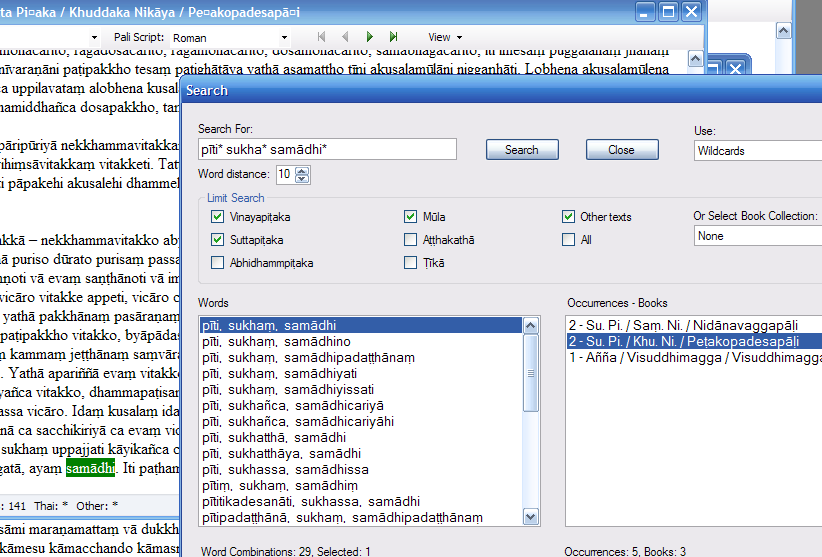 Sometimes, when we study literature about Buddhist meditation, it can seem very technical and … almost artificial. One of the great benefits of having such a structured and methodical approach to mental cultivation can become a hindrance on the path- exactly at the point where we lose sight of the fact that whatever we do study, learn and discuss was born out of someone’s meditation practice f o r t h e s o l e purpose of getting us exactly there: a step ahead in our own meditation practice.*
Sometimes, when we study literature about Buddhist meditation, it can seem very technical and … almost artificial. One of the great benefits of having such a structured and methodical approach to mental cultivation can become a hindrance on the path- exactly at the point where we lose sight of the fact that whatever we do study, learn and discuss was born out of someone’s meditation practice f o r t h e s o l e purpose of getting us exactly there: a step ahead in our own meditation practice.*
Take for example the so called “5 factors” of jhāna (or dhyāna or Chan or ZEN) meditation. While the Theravada tradition has c o n s e r v e d the Buddha’s early recognition of certain mental or psychological changes occurring when one endeavours into deeper states of concentration it is false to believe that jhāna or concentration meditation is something like a gearbox with five wheels. Even if commentaries and scholastic books sometimes evoke that picture, the process of concentration is something much more fuzzy but (unlike a blueprint in a book) something real! **
The Buddha was a master in the art of observation. As such, it was easy for him to expound his insights in new terms and similes in order to guide his disciples (forest hermits, monastery monks and lay people alike) to the same experiences.
However, quite in contrast to the scholasticism and mental proliferation which the “Buddhist philosophy” very soon after his demise was struck with (think ‘Abhidhamma’ and the natural human tendency to roam in thoughts***) the Buddha himself was quite emancipated from his own concepts.
After all, he being freed from the confinements of names and forms did not mistake signs for “real things”.
And so, to come back from our initial observation about the four jhāna, it is no wonder, that we find a healthy variety of descriptions, by the Buddha himself, for the deeper states of concentration.
In the following few examples we can peek back through time and picture a lively meditation tradition, from which experiential insights and experiences shaped the concepts and ideas of centuries of Buddhist and Hindu philosophy to come.
experiential insights and experiences shaped the concepts and ideas of centuries of Buddhist and Hindu philosophy to come.
For the current day meditator it might be beneficial as well to see, how the various definitions given by the Buddha about the same deep concentration states allow a certain “triangulation”: Seeing the Buddha as a meditation teacher with alternate descriptions on samādhi might help us to gain confidence about our own experiences and findings. Some descriptions might fit our experience closer than others. We only need a couple of matches to take a step back and suddenly see our own path match the Buddha’s path.
Exhibit A – The most frequent definition:
Just a link. Please read here if you are not familiar with the standard definition of the Jhānas.
Exhibit B – What keeps you away from deeper concentration states (Moggallāna-Saṃyutta):
kāmasahagatā saññāmanasikārā samudācaranti. … vitakkasahagatā saññāmanasikārā samudācaranti. … pītisahagatā saññāmanasikārā samudācaranti … sukhasahagatā saññāmanasikārā samudācaranti.
On the way to the first jhāna Ven. Moggallāna had “encountered perceptions and attention of things related to the sensual pleasures”. Then, in the first jhana on his way to the second jhana, he encountered “perception and attention of thought related” things. Eventually it was bliss which disturbed him and finally even the attention towards happiness (sukha) was keeping him back from moving on.
Exhibit C, the Buddha on the jhanas in a verse (from Snip, v. 1112-3)
‘‘Pahānaṃ kāmacchandānaṃ, domanassāna cūbhayaṃ;
Thinassa ca panūdanaṃ, kukkuccānaṃ nivāraṇaṃ.
‘‘Upekkhāsatisaṃsuddhaṃ, dhammatakkapurejavaṃ;
Aññāvimokkhaṃ pabrūmi, avijjāya pabhedanaṃ’’
The giving up of desire for sensual pleasures as well as giving up melancholy
The removal of tiredness, and the removal of the hindrance of worrying
The cleaning of equanimity and witnessing/mindfulness, the putting a Dhamma-thought as a for-runner
(This) I proclaim the realization of freedom, the destruction of delusion.
(This, BTW, was the entire Buddhist training path in 4 verses 🙂 – there are summaries of the Tipitaka, after all and the Buddha came up with the most precise ones…
And here the next free-style reference on the jhānas, this time from the Nidāna-Saṃyutta:
saddhūpanisaṃ pāmojjaṃ, pāmojjūpanisā pīti, pītūpanisā passaddhi, passaddhūpanisaṃ sukhaṃ, sukhūpaniso samādhi, samādhūpanisaṃ yathābhūtañāṇadassanaṃ, yathābhūtañāṇadassanūpanisā nibbidā, nibbidūpaniso virāgo, virāgūpanisā vimutti…
Based on trust is confidence. Based on confidence is bliss. Based on bliss is stilling. Based on stilling is happiness. Based on happiness is absorption. Based on absorption is seeing and knowing as it has become. Based on seeing and knowing as it has become is weariness. Based on weariness is disenchantment. Based on disenchantment is freedom.
By now it is easy to see the pattern: On the one end is kāma or desire for sensual pleasures. On the other end of the scale is samādhi, upekkha – a clear (samsuddha) calm observing (upekkha) and alert mind.
We have a period of kāma (normal life), then refined vitakka (a mental topic you apply yourself too, your meditative theme). After that we encounter first pīta some blissful experience followed by sukha (a deeper happiness) culminating in deep neutral observing concentration.
At this point, you are might want to look for dozens of more very interesting references. Just fire up your CST4 and type in the following search string:
pīti* sukha* samādhi*

But, lets get practical, shall we?
First, pick your favorite meditation theme, for instance a simple personal thought of loving kindness: “may all beings be well and happy”. Next, stick to this meditation topic, don’t change it every day or week.
 Next, commit yourself to that single, simple mental thought of focus and try to glide on it, like a bird in the sky would on a current of rising warm air.
Next, commit yourself to that single, simple mental thought of focus and try to glide on it, like a bird in the sky would on a current of rising warm air.
Finally, check your progress against some of the way pointers given by the Buddha above, triangulate yourself 🙂 or just send me an email, 🙂
Idaṃ vuccati nekkhammasukhaṃ pavivekasukhaṃ upasamasukhaṃ sambodhasukhaṃ, āsevitabbaṃ, bhāvetabbaṃ, bahulīkātabbaṃ; ‘na bhāyitabbaṃ etassa sukhassā’ti vadāmi. MN 66
This is called a happiness of renunciation, a happiness of solitude, a happiness of peace, a happiness of awakening. It has to be practiced, it has to be developed, it needs to be repeated frequently. “Do not fear this happiness”, I say. MN66
======================
* see Snip, v. 331, (one of my favorites):
Viññātasārāni subhāsitāni, sutañca viññātasamādhisāraṃ;Na tassa paññā ca sutañca vaḍḍhati, yo sāhaso hoti naro pamatto.Well spoken words have understanding as their essenceAnd what you heard and understood – it all has concentration as its essence.But neither knowing nor learning grow,For that man who is superficial and negligent.
** It more likely resembles the cultivation (bhāvanā) of a seedling or the flight of an eagle.
*** Snip once more, v. 1115 – “Nandisaṃyojano loko, vitakkassa vicāraṇaṃ” – (Sense) delight is the world bondage, and thought is its roaming around.




3 comments